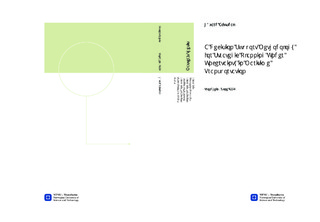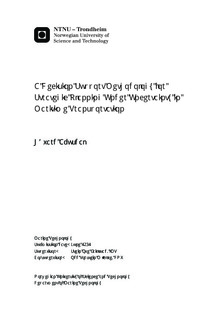| dc.contributor.advisor | Erikstad, Stein Ove | nb_NO |
| dc.contributor.advisor | Mørkve, Odd Torstein | nb_NO |
| dc.contributor.author | Abusdal, Håvard | nb_NO |
| dc.date.accessioned | 2014-12-19T12:07:22Z | |
| dc.date.available | 2014-12-19T12:07:22Z | |
| dc.date.created | 2012-11-08 | nb_NO |
| dc.date.issued | 2012 | nb_NO |
| dc.identifier | 566072 | nb_NO |
| dc.identifier | ntnudaim:7566 | nb_NO |
| dc.identifier.uri | http://hdl.handle.net/11250/238166 | |
| dc.description.abstract | Measured in volume approximately 80 % of world trade is carried at sea and with just as many different actors the shipping industry acts close to a perfect market. The highly volatile nature of the industry with unexpected market fluctuations is the basis for the major decisions shipping companies are making. Especially the fleet size and mix problem in a strategic setting involving fleet changes during several planning periods as a company growth policy. This decision is therefore highly dependent on correct timing for those who want to succeed and an introduction to the shipping industry is given to state these properties. In this thesis various optimization models solving the fleet size and mix problem are presented where the best suited model structure related to the topic is chosen. This model is of deterministic nature, meaning that all input values are known, and based upon predefined routes. The decision regarding the fleet composition during several planning periods is aiming at determining an optimal fleet for a given market. The validity of the results solely relies on input data, which is highly uncertain into an unknown future. The predictions need to coincide with the real life development in order for the results to maintain its validity.Two different trades are used as cases, solved with the models presented. Some input parameters are changed and the differences are investigated. The main findings imply that only relative small changes of the input parameters resulted in very different decisions. The related loss of making the wrong decision is observed in the region of 100 200 million USD during three years. This large loss potential and the uncertainty related to the input parameters leads to a need for a method minimizing these effects. An approach is developed to treat uncertainties minimizing the losses by finding a robust fleet capable of handling a large set of generated future scenarios, called the Scenario Algorithm . The approach is divided into three main steps; the scenario generating step where development are based on historical fluctuations, a deterministic solution with the given scenario as basis and finally storing of all the solutions with a statistical analysis of the output. The algorithm is used on the two cases with two different scenario generating approaches, based on an exponential- and a continuous uniform distribution. The fleet size and mix decisions which appeared with the highest frequency were chosen, and gave a consistent estimate based on risk aversion decreasing the potential of making losses.The approaches presented in this thesis is not meant to give a correct answer on how the future will be, but help the decisions makers reduce the uncertainty connected to the strategic decision. The deterministic model give valuable information with a given scenario as input, but the model is only capable of evaluate the scenarios individually. The result found by the scenario algorithm evaluating scenarios collectively is therefore of higher value since it provide a more robust solution. | nb_NO |
| dc.language | eng | nb_NO |
| dc.publisher | Institutt for marin teknikk | nb_NO |
| dc.subject | ntnudaim:7566 | no_NO |
| dc.subject | MTMART Marin teknikk | no_NO |
| dc.subject | Marin prosjektering og logistikk | no_NO |
| dc.title | A Decision Support Methodology for Strategic Planning Under Uncertainty in Maritime Transportation | nb_NO |
| dc.type | Master thesis | nb_NO |
| dc.source.pagenumber | 80 | nb_NO |
| dc.contributor.department | Norges teknisk-naturvitenskapelige universitet, Fakultet for ingeniørvitenskap og teknologi, Institutt for marin teknikk | nb_NO |

